Walking upright freed a person’s hands to perform work operations - that’s an undoubted plus. In addition, the load on the spine has increased, which leads to the development of serious diseases, which is a colossal minus. Osteochondrosis is one of the most common pathologies of the spine. It affects 60% of the world's population aged 35 and over. Surgical intervention is one of the methods of treatment, but it is a possible alternative in the early stages of disease development. You can treat osteochondrosis at home. The range of effective therapeutic measures is wide and affordable.
What is osteochondrosis
Dysfunction and destruction of intervertebral discs, spinal tissue is a disease of the musculoskeletal system, which is called osteochondrosis. Osteocytes are bone cells and chondrocytes are cartilage cells. Based on these names, the origin of the term "osteochondrosis" is clear. Degenerative-dystrophic changes in the spine negatively affect the general condition of the body.
As the disease progresses, muscles atrophy, nerve impulse conduction disorders, physiological system and certain internal organs are damaged. The appearance of pain in the back and neck is the first sign of the disease. Depending on the location of the lesion, osteochondrosis is:
- Cervical. The main symptoms are: pain in the shoulders, arms, neck; dizziness, tinnitus, spots before the eyes.
- Breasts. It is characterized by dull pain or lumbago in the chest area.
- Lumbosacral. There is pain in the hip joints, lower back, sacrum. The functionality of the lower limbs is limited.
- It develops in several parts of the spine at once. He is accompanied by severe pain.
Effective treatment of osteochondrosis at home is possible with timely diagnosis of the disease. It goes through 4 stages (or phases):
- The pathological process begins with dehydration of the central part of the intervertebral disc (nucleus pulposus). As a result, the structure gives way, cracks appear on the outer part of the disc (annulus fibrosus). This phase is almost invisible to the patient. Mild discomfort is manifested in uncomfortable posture or during active physical activity.
- The distance between adjacent vertebrae decreases due to subsidence of the intervertebral disc. Ligaments and muscles relax. The vertebrae gain extra mobility. For that reason, they were displaced. This condition is called spondylolisthesis. With a strong load, the patient feels discomfort, sometimes pain in the localization of the pathology.
- The formation of prolapses (hernias), protrusions (uneven protrusions) of discs, subluxations and arthrosis of the intervertebral joints are the main pathological changes in the third stage of the disease. The patient's movements are limited, numbness and tingling in the limbs appear. Pains are present, their localization depends on the location of the disease focus.
- To eliminate excessive mobility of the vertebrae, the body creates bone neoplasms (osteophytes) in the spine. Their formation occurs chaotically, depending on the place, they can injure the nerve endings of the spinal cord, adjacent vertebrae. Processes of pronounced structural changes (fibrous ankylosis) begin in the intervertebral joints. The vertebral-motor segment looks like a "walled up". Signs of osteochondrosis at this stage are practically not felt.
The risk of developing the disease increases with age. After 40 years, irreversible changes begin in the body. Osteochondrosis affects 80% of people over the age of 60. This is due to a decrease in the levels of metabolic processes, physical activity, chronic diseases and other reasons. The risk group consists of young people aged 20 to 30 who lead a sedentary lifestyle, are overweight and have a weak muscular system. There is a direct connection between pathological changes in the spine and the functionality of the body.
Reasons
Medicine has not determined the exact cause of the disease. Walking upright, improper distribution of loads when performing work operations, physical exercises, static body positions (standing, sitting) increases the risk of developing osteochondrosis. According to most doctors, the appearance of pathological processes in the spine is caused by a group of factors:
- violation of metabolic processes;
- dehydration of the body;
- genetic predisposition;
- hormonal failure;
- insufficient physical development;
- degenerative processes of the muscular system;
- posture problems;
- flat feet;
- toxic damage to the body;
- infectious diseases;
- trauma, bruising of the spine and musculoskeletal system in general;
- pregnancy;
- age changes;
- harmful working conditions;
- overweight;
- improper diet;
- misorganized sleeping place;
- bad habits;
- frequent stress.
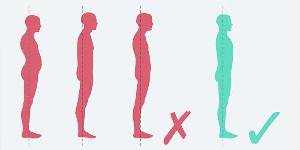
Treatment Methods
Osteochondrosis therapy is a long process. It includes a set of activities lasting 1-3 months. At that time you have to add a rehabilitation period, which lasts about 1 year. The success of treatment largely depends on the patient himself. The doctor's recommendations must be strictly followed. With partial adherence, the prognosis for recovery is minimal.
Self-medication complicates the treatment of osteochondrosis. The clinical picture of the disease is unclear, the patient begins to independently choose medications to alleviate the condition. By blocking painful sensations, he continues to lead a normal life and the disease progresses at this point. When the first symptoms of the disease appear, it is necessary to consult a doctor, perform an examination, clarify the diagnosis and begin therapeutic measures.
Treatment of osteochondrosis is carried out by two methods: conservative and surgical. General recommendations in both cases are diet and rehabilitation. Conservative treatment aims to eliminate pain, restore spinal functionality and prevent structural changes in the intervertebral joints. The set of activities includes:
- drug therapy;
- physiotherapy;
- physiotherapy exercises;
- massage (paravertebral);
- manual therapy;
- using a needle applicator;
- spinal traction.
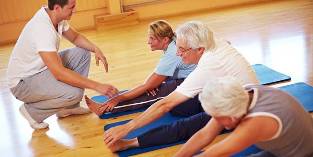
The decision on surgical treatment of the disease is made by the doctor's council in the absence of the results of conservative treatment or severe lesions of the articular structures of the spine. It is important to consult a doctor in a timely manner and not to start the disease. Effective treatment is possible at home. This is confirmed by many years of practice in the treatment of the disease.
How to treat osteochondrosis at home
Given the specifics of the disease and the duration of recovery, the issue of effective treatment of osteochondrosis at home is relevant for most patients. It is important to take into account that this is an unusual disease and that it is impossible to achieve a positive result only with the help of medication. It is necessary to regularly use a number of measures that can be taken according to the instructions of the doctor at home.
Medications
Medications are prescribed in the acute form of the disease. Osteochondrosis is a systemic disease. Its negative consequences affect the state of the organism as a whole, so drug treatment solves a number of tasks:
- pain relief;
- relieve inflammation;
- restore metabolic reactions;
- improve blood circulation in the affected areas;
- restore cartilage tissue;
- to restore joint mobility;
- eliminate depression caused by severe pain.
Drug therapy includes several groups of drugs.
Group |
Action |
Pharmacological forms |
Nonsteroidal anti-inflammatory substance |
Relieve inflammation and pain (inhibit prostaglandins) |
Capsules, tablets, gels, ointments, patches, injections |
Analgesics, anesthetics |
Pain relief |
Tablets, injections |
Vasodilators |
Improving the nutrition of damaged tissues, accelerating their regeneration |
Injections, tablets (pills), gels, creams, ointments |
Glucocorticosteroid |
Heavy artillery, powerful anti-inflammatory |
Tablets, injections, ointments |
Muscle relaxants (muscle relaxants) |
Relaxing, calming effect on muscles |
Tablets, injections |
Chondroprotectors (glucosamine, chondroitin) |
Stabilize the process, prevent further destruction |
Capsules, tablets, gels, ointments, injections |
Sedatives |
Eliminate depression, increase resistance to stress, improve sleep quality, stabilize emotional state |
Tinctures, tablets |
Vitamins (antioxidants) |
Restore sensitivity of affected nerve endings, reduce pain |
Tablets, injections |
Vitamin-mineral complexes |
General body strengthening |
Tablets |
Exercise
A sedentary lifestyle has a detrimental effect on the condition of the body. Effective home treatment of the spine includes special exercises. There are author's complexes of physiotherapeutic exercises, you can use the recommendations and compile an individual training program.
Physical education is the main cure for osteochondrosis. Recommended exercises are bending, twisting, swinging the back. It is useful to perform hanging on a bar, use yoga exercises to stretch the spine. Sufficient attention should be paid to strengthening the back muscles - pulling, performing push-ups. There are a number of rules you need to follow to avoid harming your health:
- Corrective gymnastics should start with warming up;
- twisting should not be done for acute lumbar spine pain;
- jumping, running are undesirable, it is better to replace them by walking, swimming, cycling or skiing;
- Circular rotation of the head is not always recommended for cervical osteochondrosis.
When choosing gymnastics, one should take into account age, weight of exercises, physical fitness. It is necessary to engage in physiotherapy exercises at least 3 times a week. The proposed complex will help cure cervical osteochondrosis at home (all exercises are performed 10 times):
- Sit in a chair, straighten your back, perform smooth head turns alternately to the right and left.
- The starting position is the same. Place your right palm on your right cheek and tilt your head slightly to the left. Repeat the exercise in the opposite direction.
- Sit up straight, fold your arms at the nape of your neck, bend slightly forward. Press your hands to the back of your head, lower your head slightly, touch your chest with your chin, feel the muscle tension.
- Sit down, grab the chair by the edge of the chair with your hands, slowly lower your head back, spread your shoulder blades, return to the starting position.
- Raise your shoulders, try to reach for their ears, lower your shoulders.
Lower back pain predominates. Uncomplicated regular gymnastics with lumbar osteochondrosis will bring more benefits than the constant use of painkillers (repeat the exercises 5-10 times):
- Stretching the back muscles- lie on your back, raise your arms, stretch your toes.
- Lifting the pelvis- lie on your back, bend your legs, arms to the side, raise your pelvis (inhale), lower (exhale).
- Embryonic Pose- Lie on your back, draw your knees to your chest, squeezing them with your hands (inhale), pull your head to your knees (exhale).
- Cat pose- stand on all fours as you exhale, round your back as you inhale, bend over, lift your head up.
Treatment of osteochondrosis with folk remedies
Folk remedies for osteochondrosis have proven themselves well. They are efficient and safe. There are many recipes for the preparation of medicinal tinctures, ointments, rubs, decoctions. If you want, you can cook them yourself. Herbal remedies eliminate the causes of the disease, herbs contain a large amount of useful substances and generally have a strengthening effect. Herbal remedies are affordable. Methods of treating the disease with bee stings and bee products are known.
Compresses
Compresses help reduce pain, relieve swelling and inflammation. Home treatment of the back and spine will be effective if warm-up procedures are used for two weeks. They improve blood circulation, relieve pain, relieve muscle cramps. Simply make a compress of horseradish and apple:
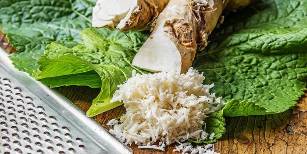
- Horseradish contains mustard oil (warming effect), apples have a lot of organic acids (anti-inflammatory, analgesic effect);
- on a fine grater grate a small horseradish root and an apple;
- gently squeeze the juice;
- shape the cake;
- put on the inflamed area;
- polyethylene blanket, towel;
- wrap with a warm cloth;
- put on at night every day until the severe pain goes away.
Infusions and decoctions
Effective treatment of osteochondrosis at home involves not only the use of external means, but also the impact on the body from within. Medicinal infusions and decoctions are used for this purpose. They relieve pain, inflammation and calm the nervous system. In folk medicine, infusions of leaves and seeds of parsley, a decoction of cones are used to treat the spine. Cinquefoil is effective, has an analgesic effect, repairs damaged tissues.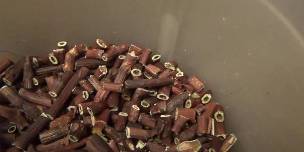 Tincture recipe:
Tincture recipe:
- Mix 200 g of chopped cinquefoil root and 100 g of upright potency;
- Pour the herbal mixture into 1 liter of vodka;
- insist for 3 weeks;
- strain;
- take 1 tablespoon 3 times daily before meals;
- The course of treatment is 1 month.
Applications
Warm-up procedures include applications. Such treatment of the spine with folk remedies helps to restore the functionality of neuromuscular elements in the affected joints of the spine. For application, a gauze napkin is moistened with a medicinal solution and applied to the affected area, holding for 30-40 minutes. The procedure can be performed several times a day. Technique of applying honey with aloe:
- natural honey has a unique medicinal composition, aloe is a natural antibiotic, a biological stimulant;
- prepare a tincture of 100 g of honey, 50 g of aloe leaves (must be passed through a meat grinder) and 100 ml of vodka;
- insist on 1 week;
- moisten a piece of natural fabric with tincture;
- refer to the inflamed area;
- put polyethylene and a towel on top;
- wrap with a woolen scarf;
- Perform the procedure twice a day.
Rubbing
For effective treatment of osteochondrosis at home you can prepare rubbing and ointments. The rubbing procedure is similar to a massage performed 2-3 times a day. Stimulates blood circulation, relieves inflammation, pain. Turpentine, kerosene, ulcer fat, internal lard, medicinal plants (plantain, sage, juniper) are used to prepare medicinal rubbing.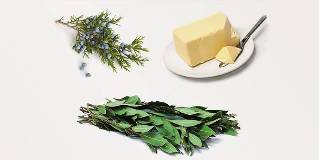 Recipe for bay leaf spruce fat:
Recipe for bay leaf spruce fat:
- 1 teaspoon juniper needles, 6 teaspoons chopped bay leaves, 12 teaspoons melted butter, mix thoroughly;
- apply the mixture to the site of inflammation; Rub the ointment with light movements;
- wrap your back with a warm woolen cloth;
- rub in the afternoon and before bed.
Medicinal baths
Baths with herbal decoctions are effective during rehabilitation. In acute conditions, this procedure is not recommended. Therapeutic baths dilate blood vessels, relax muscles and have a beneficial effect on the articular structures of the spine. Chamomile, lemon balm, string, thyme, horsetail, thyme and other herbs are used to prepare decoctions. Medicinal raw materials can be prepared independently or purchased at a pharmacy.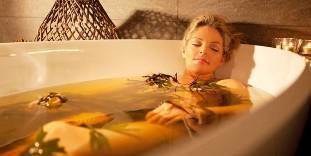 Decoction of medicinal bath is prepared as follows:
Decoction of medicinal bath is prepared as follows:
- take 250-300 g of dry herbal material or prepare a mixture of medicinal herbs;
- boil in 5 liters of water for 20 minutes;
- strain and add to prepared warm water;
- Take a bath 10-15 minutes before bed.

























